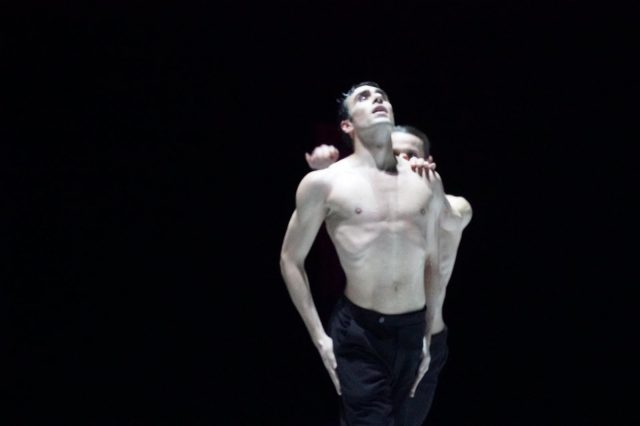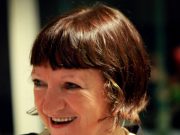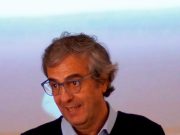
(Esclusiva Campadidanza)
Nato a Napoli nel 1989, Rosario Guerra è a pieno titolo uno dei protagonisti della scena europea della danza. Da molti anni calca i teatri più prestigiosi del mondo interpretando ruoli da solista e spettacoli firmati dai più grandi coreografi esistenti.
Rosario, quando e come ti sei avvicinato alla danza?
Ho iniziato all’età di nove anni. Il merito è di mia sorella e di mio padre. Quando ero piccolo, infatti, mia sorella maggiore frequentava una scuola di danza ed io, ispirato da lei, ballavo in continuazione. La mia passione erano le musiche latino americane. Come partiva la prima nota, iniziavo a muovermi senza smettere più. Mio padre, che aveva notato questa mia attitudine, mi spronò a intraprendere un percorso professionale e, per questo, mi iscrisse nella stessa scuola dove già andava mia sorella. È così che è iniziato tutto…
Evidentemente tuo padre non sbagliava, la tua predisposizione alla danza e il tuo talento non hanno tardato a trovare conferme. A 15 anni sei entrato nella Scuola del Balletto di Toscana diretta Cristina Bozzolini e, dopo appena un anno, sei entrato a far parte della Compagnia Junior. Puoi dirmi qualcosa di quest’esperienza?
Tutto accadde un po’ per caso… L’estate del 2006, a Lecce, seguì un workshop con il Maestro Eugenio Scigliano, il quale, vedendo in me un potenziale sul quale investire, mi invitò a fare l’audizione per la Scuola del Balletto di Toscana presso cui, tutt’ora, insegna stabilmente. La cosa singolare è che, pochi mesi prima, durante il saggio di fine anno in cui portavamo in scena la versione del Lago dei cigni del Maestro Antonio Colandrea, conobbi un ballerino del Teatro del Maggio Musicale Toscano (che partecipava allo spettacolo in qualità di danzatore ospite), il quale mi aveva suggerito di fare esattamente la stessa audizione. Quando decisi di provarci, fu proprio lui che mi incoraggiò e mi aiutò a trovare una sistemazione a Firenze. Passata l’audizione, se ho avuto la possibilità di vivere lontano da casa, lo devo esclusivamente ai sacrifici di mia madre, la quale, nonostante la mia famiglia stesse vivendo un momento difficile per aver perso mio padre, non ha mai smesso neanche per un attimo di credere in me e di supportarmi. Fortunatamente, comunque, le cose andarono meglio del previsto. Anche se ero stato ammesso alla scuola con mezza borsa di studio per il contemporaneo, dopo soltanto un paio di mesi, fui ammesso anche al corso di classico guadagnando, così, la borsa di studio completa. Lavorai tantissimo e, per colmare le lacune che avevo, frequentai sia i corsi superiori che quelli inferiori, dove c’erano ragazzini molto più piccoli di me. Fu un periodo difficile, ma il mio impegno fu premiato. L’anno successivo facevo già parte della compagnia junior, la qual cosa mi ha dato la possibilità di fare molta esperienza in scena e di danzare coreografie di Maestri come Bigonzetti, Monteverdi e lo stesso Scigliano.
Prima di entrare nella Scuola del Balletto di Toscana avevi studiato soltanto danza classica e moderna, com’è stato scoprire la tecnica contemporanea?
Quando ho iniziato a studiare danza contemporanea è stato come riscoprire il mio corpo, ho preso coscienza del peso e acquisito gli strumenti per esplorare diverse possibilità di movimento. Oltretutto, studiando questa tecnica con maestri e coreografi molto diversi tra loro, ho imparato stili lontani l’uno dall’altro, che hanno favorito la mia versatilità.
A 18 anni sei entrato nel Balletto Teatro di Torino di Loredana Furno. Come è stato iniziare a lavorare così giovane e quali sono i ricordi più importanti di quel periodo?
Iniziare a lavorare così presto mi ha dato la conferma che il percorso che avevo intrapreso era quello giusto per me, significava che stavo facendo le scelte esatte. Ciò mi ha motivato ancora di più nel proseguire il mio cammino professionale con sempre più determinazione. In tal senso, il Balletto Teatro di Torino ha rappresentato un’altra tappa importante di questa mia crescita lavorativa e umana. Loredana Furno è una direttrice molto in gamba e con me è sempre stata molto disponibile e rispettosa, oltretutto, il lavoro di Matteo Levaggi, all’epoca coreografo residente della compagnia, mi ha fatto scoprire un ‘movimento’ molto interessante.
Tra i ricordi più belli che conservo di quel periodo, a parte quello di aver scoperto Torino – una bellissima città -, c’è il tour che facemmo a New York. Ero appena entrato in compagnia e, dopo pochissimi mesi, mi ritrovai a danzare sul palco di The Joyce Theater: un’esperienza straordinaria!
Dopo poco più di un anno sei entrato in una delle più prestigiose compagnie d’Europa. Come sei arrivato alla Gauthier Dance?
Il mio amico Giuseppe Spota, che dall’Aterballetto si era trasferito a Stoccarda, mi disse che c’erano due posti liberi nella compagnia di Eric Gauthier, una come membro della compagnia e una come stagista. Feci l’audizione e riuscì ad ottenere quella di stagista. Iniziai il mio lavoro con entusiasmo e dedizione tanto che, dopo soltanto tre mesi, rividero la mia posizione e, a fine stagione, mi offrirono il contratto ‘intero’. Così entrati a far parte della compagnia a pieno titolo.
Come ti sei trovato a Stoccarda? Quali sono, secondo te, le differenze più evidenti, tanto in ambito ballettistico che lavorativo, tra la Germania e l’Italia?
A Stoccarda sono stato benissimo, è stata un’esperienza molto eccitante durata per ben nove stagioni. In compagnia ho trovato un ambiente internazionale, ho imparato l’inglese e lo spagnolo, ho lavorato con coreografi straordinari provenienti da tutto il mondo, ho conosciuto danzatori di ogni nazionalità e mi sono cimentato con generi di danza sempre diversi, che hanno arricchito molto il mio linguaggio corporeo.
Per quanto riguarda le differenze tra Italia e Germania, la prima cosa a colpirmi è stata la scena culturale. In Germania, infatti, i teatri vengono supportati non solo a livello statale, ma anche attraverso sponsor molto generosi nonché mediante donazioni di privati, amanti del teatro, che in questo modo sostengono il lavoro delle compagnie. Altra novità è stata la precisione e la puntualità nei pagamenti, cosa che non avevo mai sperimentato prima, ma la differenza più rappresentativa di queste due realtà è stata constatare che: se in Italia, quando dico di essere ballerino, la gente mi chiede immancabilmente “sì, ma per sostenerti, che lavoro fai?”, in Germania gli artisti non devono giustificare il loro status. Essere ballerino, pittore o altro, non è considerato un hobby o una stravaganza, ma un lavoro come gli altri.
La prima volta che ti ho visto ballare, sono rimasto folgorato dalla tua interpretazione del Nijinsky di Marco Goecke. Non mi riferisco semplicemente alle difficoltà tecniche del pezzo, quanto all’anima che sei riuscito a dare al personaggio. Mi racconti com’è nato e come hai fatto a portare in scena emozioni così autentiche?
Conoscevo già Marco Goecke perché aveva collaborato con la compagnia in precedenza. Quando fu il momento di montare il suo Nijinsky, non era ancora sicuro di quale direzione prendere, se cercare un danzatore che assomigliasse anche fisicamente al grande ballerino russo o andare in una direzione diversa. Per me già aveva pensato al ruolo di Diaghilev e, per questa ragione, fui il primo ballerino con il quale iniziò a fare le prove. Questa cosa che gli diede l’opportunità di osservarmi lavorare e di conoscermi meglio, tanto che poi cambiò idea, decidendo di assegnare a me il ruolo del protagonista. Anche se ero lusingato per la sua scelta, in principio è stato molto difficile. Ricordo che ero addirittura frustrato perché per i primi 20 minuti non era neanche previsto il mio ingresso in scena. Poi, invece, è iniziato lo straordinario viaggio che ci ha portati a raggiungere il risultato che hai visto. Nel mio personaggio ci sono tracce di Nijinsky, tracce di Marco e tracce di me…
Quando Marco Goecke ti ha invitato a lavorare per lui allo Staatsballett Hannover, hai avuto dubbi o l’hai seguito senza pensarci troppo?
Devo ammettere che non è stato semplice perché, nonostante fossi lusingato dalla proposta di Marco, nel corso degli anni trascorsi insieme, Eric Gauthier mi ha aiutato a crescere, mi ha dato tutti i ruoli adatti a me e le possibilità che sapeva avrei potuto cogliere, mi ha trattato come un figlio e considerato un vero amico. Oltretutto la Gauthier Dance mi ha consentito di danzare coreografie di Kylian, Galili, Shechter, Naharin, Ekman, Cerrudo, Soto e tanti altri grandi della danza contemporanea. No, non è stato facile, ma a parte l’indecisione iniziale, sono contento di aver cambiato, perché Marco è pura ispirazione, il suo modo di creare è poesia in movimento e in sala con lui regna l’armonia.
Che differenza c’è tra il lavorare per una compagnia privata e una pubblica?
Sicuramente in una compagnia pubblica ci sono più regole, ma anche una serie di aspetti positivi. Nello Staatsballett Hannover, per esempio, lavoriamo nello stesso teatro in cui ci esibiamo. Ciò mi consente di incontrare e conoscere altri artisti: musicisti, cantanti e attori. A Stoccarda, invece, gli studi erano separati dal teatro. Per quanto riguarda il resto, come repertorio e compagnia, non ci sono grandi differenze, si lavora con diversi coreografi e molti sono gli stessi.
Quali sono i tuoi progetti futuri? Pensi, un giorno, di tornare a Napoli?
Ho molte idee per il mio futuro. Il progetto più ambizioso è quello di diventare assistente di un coreografo o di un direttore o, perché no, diventare io stesso direttore di una compagnia. Rispetto alla possibilità di tornare a Napoli, posso dire che è un mio desiderio, ma che lo vedo come un progetto molto lontano… Attualmente in Italia i teatri chiudono e la danza non riceve finanziamenti sufficienti a sostenersi, non potrei mai fare ciò che faccio qui. Un giorno, però, vorrei tornare e fare qualcosa per aiutare i giovani che intendono intraprendere questa carriera.
Rosario, sono certo che realizzerai tutti i tuoi sogni e che il tuo spessore umano, oltre alla tua bravura, ti consentirà senz’altro di aiutare molti giovani.

Rosario Guerra (Naples 1989) is a protagonist of the European dance scene. For many years he has been performing in some of the world’s most prestigious theatres, interpreting solo roles and dancing inshows by the greatest choreographers of the present-day.
Rosario, when and how did you become involved in dance?
I started at the age of nine. I give credit to my sister and my father. When I was a child, my older sister attended a dance school and, inspired by her, I used to dance continuously. My passion was Latin American music. As soon as I heard the first note I would begin to move, unable to stop. My father, who noticed my behaviour, encouraged me to embark on a professional career and so enrolled me in the same school where my sister was already studying. That’s how it all started…
It seems like your father was right, your predisposition for dance and your talent became affirmed very early on. At 15 you entered the Ballet School of Tuscany directed by Cristina Bozzolini and after just one year you joined the Junior Company. Can you tell me something about this experience?
It all happened by chance… The summer of 2006, in Lecce, I attended a workshop held by Maestro Eugenio Scigliano, who saw a potential in me that he wanted to invest in, invited me to audition for the School of Balletto di Toscana where he still continues to teach. The singular thing was that a few months earlier, during the end of year recital for which we staged Maestro Antonio Colandrea’s version of Swan Lake, I met a dancer from the Teatro del Maggio Musicale Toscano (a guest dancer in our show), who suggested that I take part in the same audition. When I decided to try it out, he was the one to encourage and help me in finding accommodation in Florence. After the audition, I had the opportunity to live away from home, which I owe exclusively to my mother’s sacrifices, who, even though my family was experiencing a difficult time after losing my father, never stopped – not even for one moment – believing in me and supporting me. Luckily, things turned out better than expected. Initially I was admitted to the school with half a scholarship for contemporary dance, but after only a couple of months, I was also admitted to follow the ballet program, thus earning the full scholarship. I worked a lot and to fill the gaps I attended both the advanced and elementary courses where the guys where much younger than me. It was a difficult period, but my commitment was rewarded. The following year I was already part of the junior company, which gave me the opportunity to gain a lot of experience on stage and to dance choreographies by Masters such as Bigonzetti, Monteverdi and Scigliano himself.
Before entering the School of Balletto di Toscana, you had only studied ballet and modern dance, what was it like to discover contemporary technique?
When I started studying contemporary dance it was like rediscovering my body, I became aware of weight and acquired the tools to explore different possibilities of movement. Moreover, by studying this technique with very different teachers and choreographers, I learned styles that were very distinct from one another, which favoured my versatility.
At 18 you entered the Balletto Teatro di Torino under the direction of Loredana Furno. What was it like to start working at such a young age and what are the most important memories you have of that period?
Starting to work so early on was confirmation that the path I had taken was the right one for me; it meant that I was making the right choices. This motivated me even more to continue my professional career with more and more determination. In this sense, the Balletto Teatro di Torino represented another important step in my work and human growth. Loredana Furno is a very good director and she has always been very helpful and respectful with me. Moreover, Matteo Levaggi – the company’s resident choreographer – made me discover a very interesting body ‘movement’. Among the most beautiful memories that I have of that period, apart from that of discovering Turin – a beautiful city -, there was the tournee we did in New York. I had just joined the company when, after a few months, I found myself dancing on stage at The Joyce Theater: it was an extraordinary experience!
After just over a year, you entered one of the most prestigious dance companies in Europe. How did become part of Gauthier Dance?
My friend Giuseppe Spota, who had moved to Aterballetto from Stuttgart, told me that there were two vacant positions in Eric Gauthier’s company, one as a member of the company and one as an intern. I auditioned and managed to get the position of intern. I started my work with such enthusiasm and dedication that after only three months they reviewed my position and at the end of the season offered me a full contract. So I become an official member of the company.
How it was to move and live in Stuttgart? What, in your opinion, are the most obvious differences, both in ballet and work, between Germany and Italy?
I had a great time in Stuttgart, it was a very exciting experience that lasted for nine seasons. In the Gauthier Dance I found an international environment, I learned English and Spanish, I worked with extraordinary choreographers from all over the world, I met dancers of all nationalities and I experimented with different dance genres that greatly enriched my body language.
As for the differences between Italy and Germany, the first thing that hit me was Stuttgart’s cultural scene. In Germany theatres are actually not only supported by the Governament, but also by very generous sponsors and by private theatre lovers, who make donations to support the work of dance companies. Something else that was novel was the precision and punctuality of payments, which I had never experienced before. But the most representative difference of all between these two realities is that: in Italy, when I say that I am a dancer, people invariably ask me ” yes, but what do you do in order to support yourself? ”, in Germany artists do not have to justify their status. Being a dancer, painter or something else is not considered a hobby or an extravagance, but a job like any other.
The first time I saw you dance, I was struck by your interpretation of Marco Goecke’s Nijinsky. I am not referring simply to the piece’s technical difficulties, but to the soul that you managed to give to the character. Can you tell me how it was born and how did you bring such authentic emotions on stage?
I already knew Marco Goecke because he had previously collaborated with the Gauthier Dance. When it was time to create his Nijinsky, he still didn’t know which direction to take, whether to look for a dancer who also physically resembled the great Russian dancer or whether to go in a different direction. For me he had already thought about the role of Diaghilev and for this reason I was the first dancer with whom he started rehearsing. This gave him the opportunity to observe me working, to get to know me better, so much so that he then changed his mind, deciding to assign me the protagonist’s role. Although I was flattered by his choice, it was very difficult at the beginning. I remember I was even frustrated because for the first 20 minutes, I wasn’t even scheduled to performe. However, then the extraordinary journey that led us to achieve the result you saw began to take form. In my character there are traces of Nijinsky, traces of Marco and traces of me…
When Marco Goecke invited you to work for him at the Staatsballett Hannover, did you have doubts or did you follow him without thinking too much?
I must admit that it was not easy because, despite being flattered by Marco’s proposal, over the years that we had spent together, Eric Gauthier helped me grow, he gave me all the roles and possibilities that he knew I could grasp, he treated me like a son and considered me as a true friend. Moreover, the Gauthier Dance allowed me to dance choreographies by Kylian, Galili, Shechter, Naharin, Ekman, Cerrudo, Soto and many other greats of the contemporary dance scene. No, it was not easy, but apart from the initial indecision, I am happy to have made the change, because Marco is pure inspiration, his way of creating is poetry in movement and with him harmony reigns in the studio.
What is the difference between working for a private and a public company?
Certainly in a public company there are more rules, but also a series of positive aspects. In the Staatsballett Hannover, for example, we work in the same theatre where we perform. This allows me to meet and get to know other artists: musicians, singers and actors. In Stuttgart, the studios were separated from the theatre. As for the rest, such as repertoire and company, there are no big differences, we work with different choreographers and many are the same.
What are your future projects? Do you think about going back to Naples one day?
I have many ideas for my future. The most ambitious project is to become an assistant to a choreographer or a director or, why not?, to become a company director myself. Regarding the possibility of returning to Naples, I can say that it is a desire of mine, but I see it as a very distant project … Currently in Italy the theatres are closing down and dance does not receive enough funding to support itself, I could never do what I do here . One day, however, I would like to come back home and do something to help young people who want to pursue this career.
Rosario, I am sure that you will realise all your dreams and that your depth of humanity, in addition to your skill, will certainly allow you to help many young people.













































